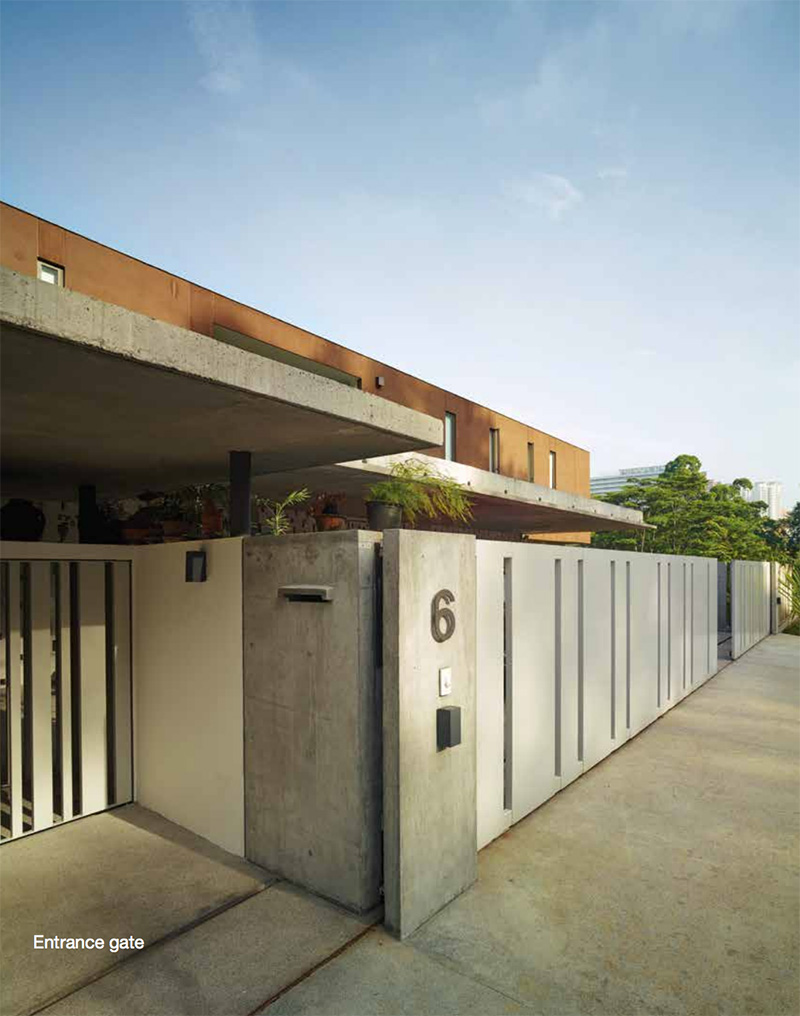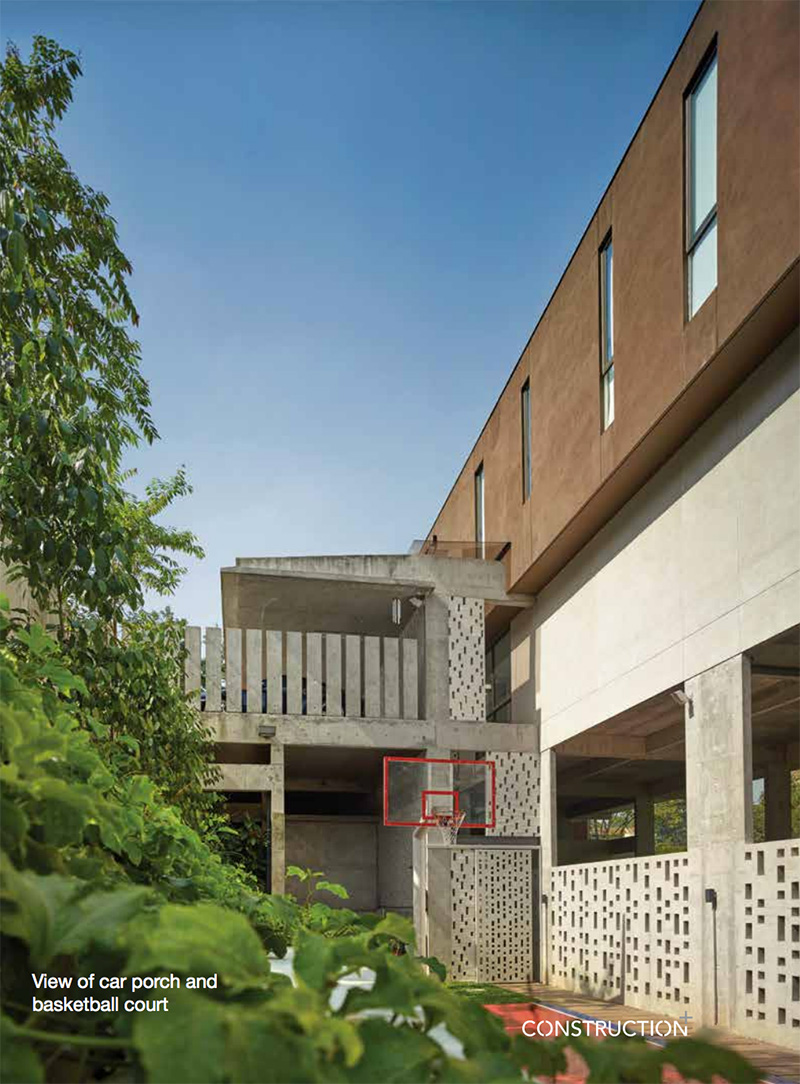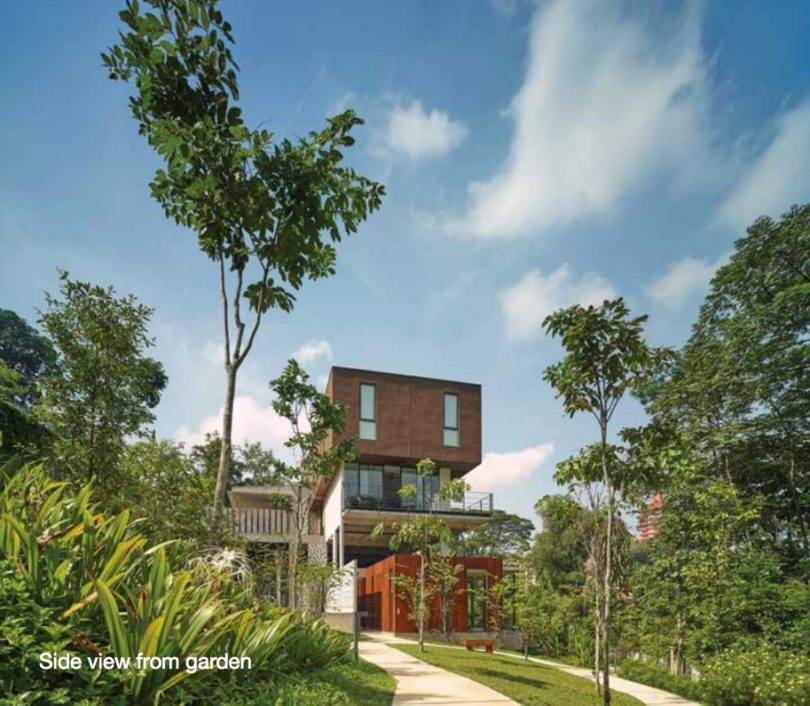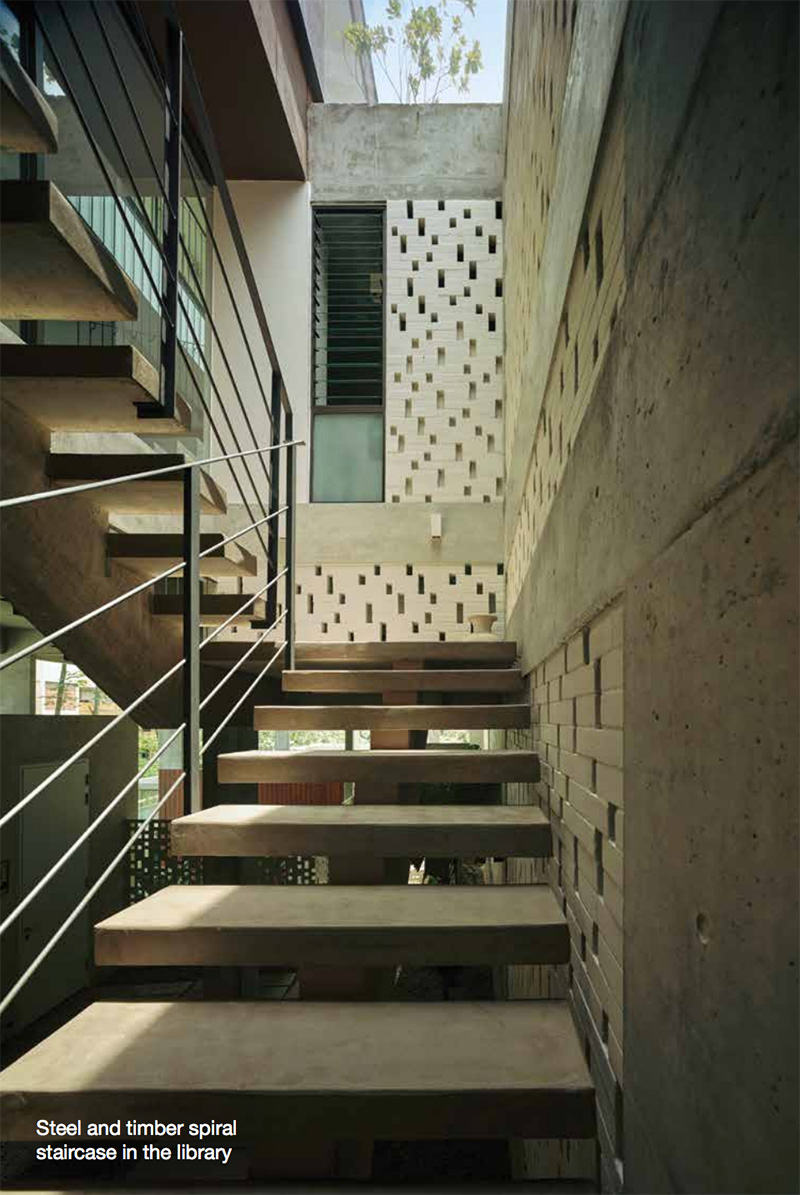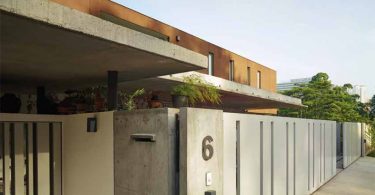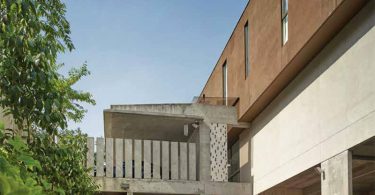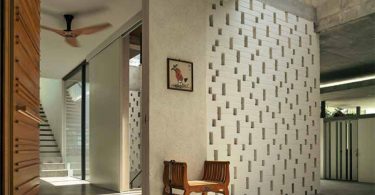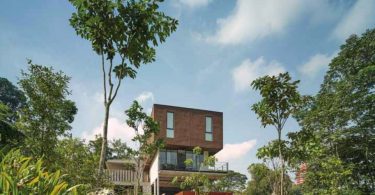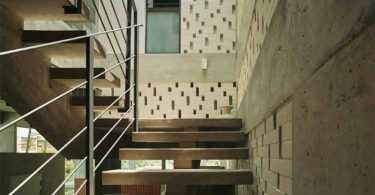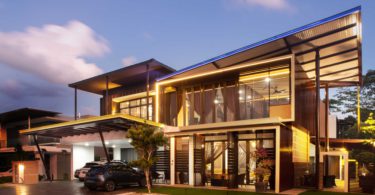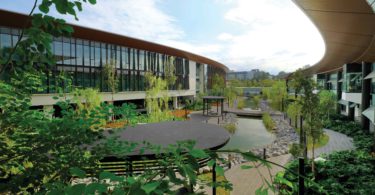Tepian Tunku residence is situated in an oldestablished, low-density residential area called Bukit Tunku in central Kuala Lumpur, surrounded by a vast landscape. The 26,000-square-foot site is situated along a dead-end road, sloping downwards with wild overgrown plants and ending close to an existing stream outside the lot with a gross built-up area of approximately 10,000 square feet.
DESIGN AND LAYOUT
The client’s brief was to design for a household of eight. The main criterion for the spatial arrangement, apart from fulfilling the client’s requirements, was to reduce cuts and fills of the site. Given its shape, the architects decided on a long rectangular building, allowing for an uninterrupted view towards the garden and of the sunset. The main entrance is located at the centre or heart of the building. The kitchen opens up to the dining and living spaces with a terrace all around, where the occupants live, eat and interact with one another most of the time. Being the most commonly used spaces, the combined living, kitchen and dining areas are kept open and bright. Other spaces include a library; storage space and walls for paintings; a gym and playroom, a swimming pool; an area for planting herbs; a garden with cycling/ walking path; an outdoor basketball court; and car park spaces for five cars with a guardhouse. The lower garden spaces are reachable through an external staircase, also directly located next to the main entrance. This zone is enclosed with perforated brick walls, skylight above and trees in between as a puffer zone between the car porch and the building envelope. The only space in this zone is the wet kitchen, which is accessible directly from the car porch and connected to the living/ dining area.
A double height library combines the lower and ground floor together and is visible through a full-height glass wall when walking towards the main entrance of the house. The library is fully built using plywood, with plywood ceiling panels and full-height plywood shelves. It projects includes a gallery space connected through a steel and timber spiral staircase in the centre and a study space facing the pool through a double-height glass façade.
The private bedrooms are situated above and the spaces for entertainment, play and sport activities are located below, surrounded by a lush garden. They can be accessed via a light and minimal staircase that cantilevers from the wall. The occupants will pass a small roof garden before arriving at the long corridor on the third floor.
TECHNOLOGICAL AND ENERGY-EFFICIENT FEATURES
The private spaces on the third floor are expressed in a long rectangular ‘box’ with dark browncoloured cement finish. It is one of the first buildings in Malaysia that uses coloured cement technology from Germany instead of plaster and paint. Repainting is not necessary as there is a natural patina. The overhanging bottom part of the framed ‘box’ is constructed as a double slab and reinforced concrete (RC) fins shading devices for the terrace below.
The front elevation is kept understated with only a few vertical slot-like windows for the private corridors. This vertical ‘opening’ is repeated throughout, either in the RC fins framing the porch or along the boundary line, or the vertical slots in the main entrance sliding gates. The penetration of the Kalsa brick walls is carried through into the openings of all steel gates and steel partitions, as well as in the fair-faced concrete wall separating the gym/play pavilion and the basketball court next to it.
The elevation facing the garden is a play of composing and arranging openings; enclosures or semi-enclosures; different colours, materials and textures—like a jigsaw or patchwork, mainly designed from the inside out and only partially composed from the outside. Fair-faced concrete fins and Shera planks are used for the library and gym pavilion, large sliding glass doors are placed along the terrace, Shanghai plaster or coloured cement are used for the walls and a fair-faced concrete canopy in raw-sawn timber finish texture is placed at the end of the swimming pool. The pool finish is in smooth, polished concrete with salinated instead of chlorinated water, overflowing at the outer edges.
The gym/playroom was designed as a pavilion on its own, with its own flat roof, tucked below the building. There is enough open space for cross ventilation all around and natural light filtration into the circulation area. All bathrooms were designed to allow for natural ventilation and views to the outside. At the same time, they allow for privacy through rotated, angled fair-faced concrete fins with gaps in between. The central living space is kept open throughout the day, with ceiling fans enhancing the cross ventilation. Other active energy-efficient features include solar panels on top of the roof and rainwater harvesting for watering the garden and washing the cars.
Location: Kuala Lumpur, Malaysia
Completion Date: November 2014
Site Area: 26,000 square feet
Gross Floor Area: 10,000 square feet
Client/Owner: Private
Architecture Firm: ZLG Sdn Bhd
Principal Architects: Susanne Zeidler; Huat Lim
Main Contractor: CHB Builders Sdn Bhd
Mechanical & Electrical Engineer: Perunding Eagles Engineers Sdn Bhd
Civil & Structural Engineer: GR Structural Sdn Bhd
Landscape Designer: Colin K. Okashimo
Coloured Cement: Aalborg Portland Malaysia Sdn Bhd

 Hong Kong
Hong Kong Singapore
Singapore Indonesia
Indonesia Tiếng Việt
Tiếng Việt ประเทศไทย
ประเทศไทย

